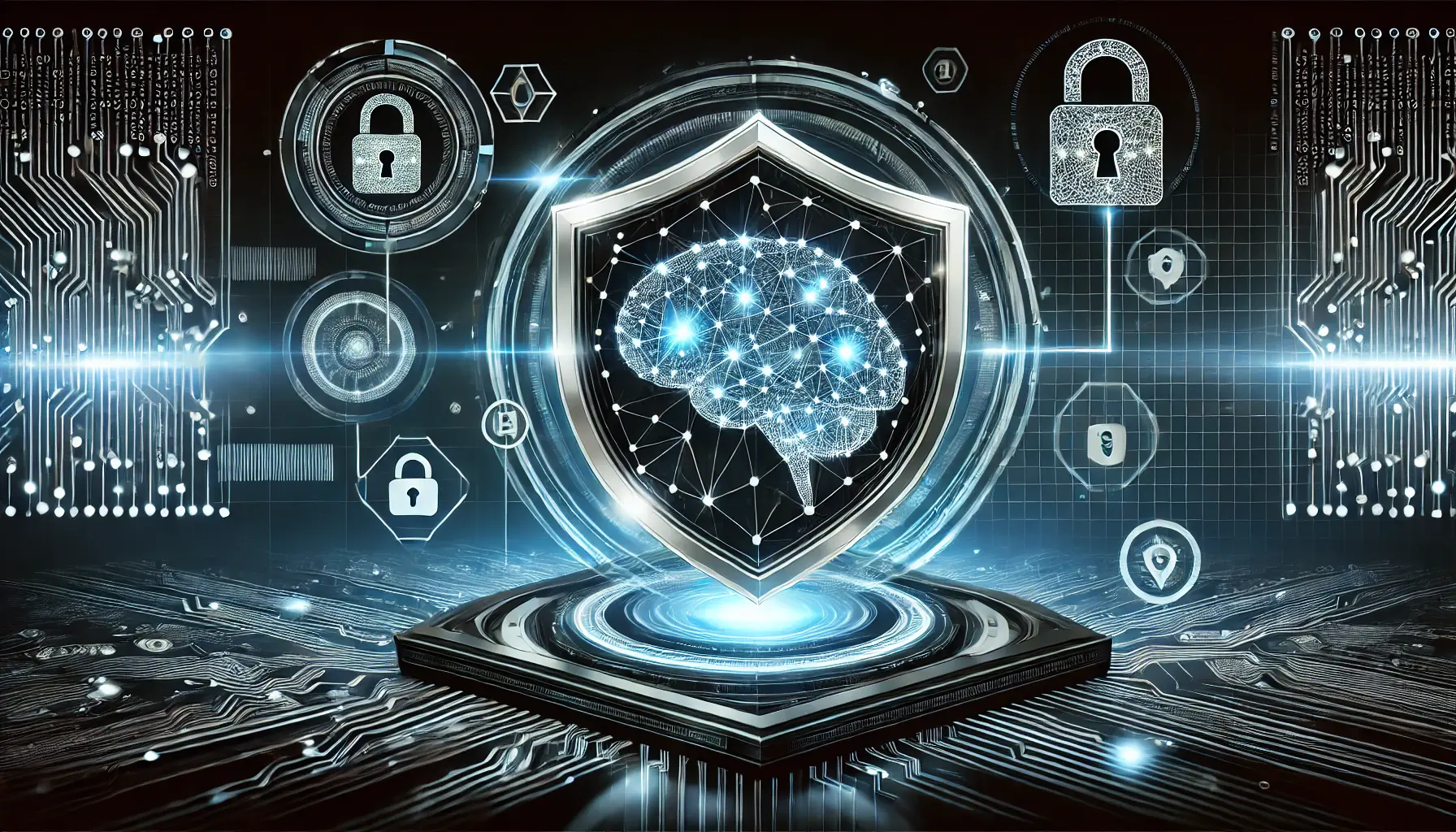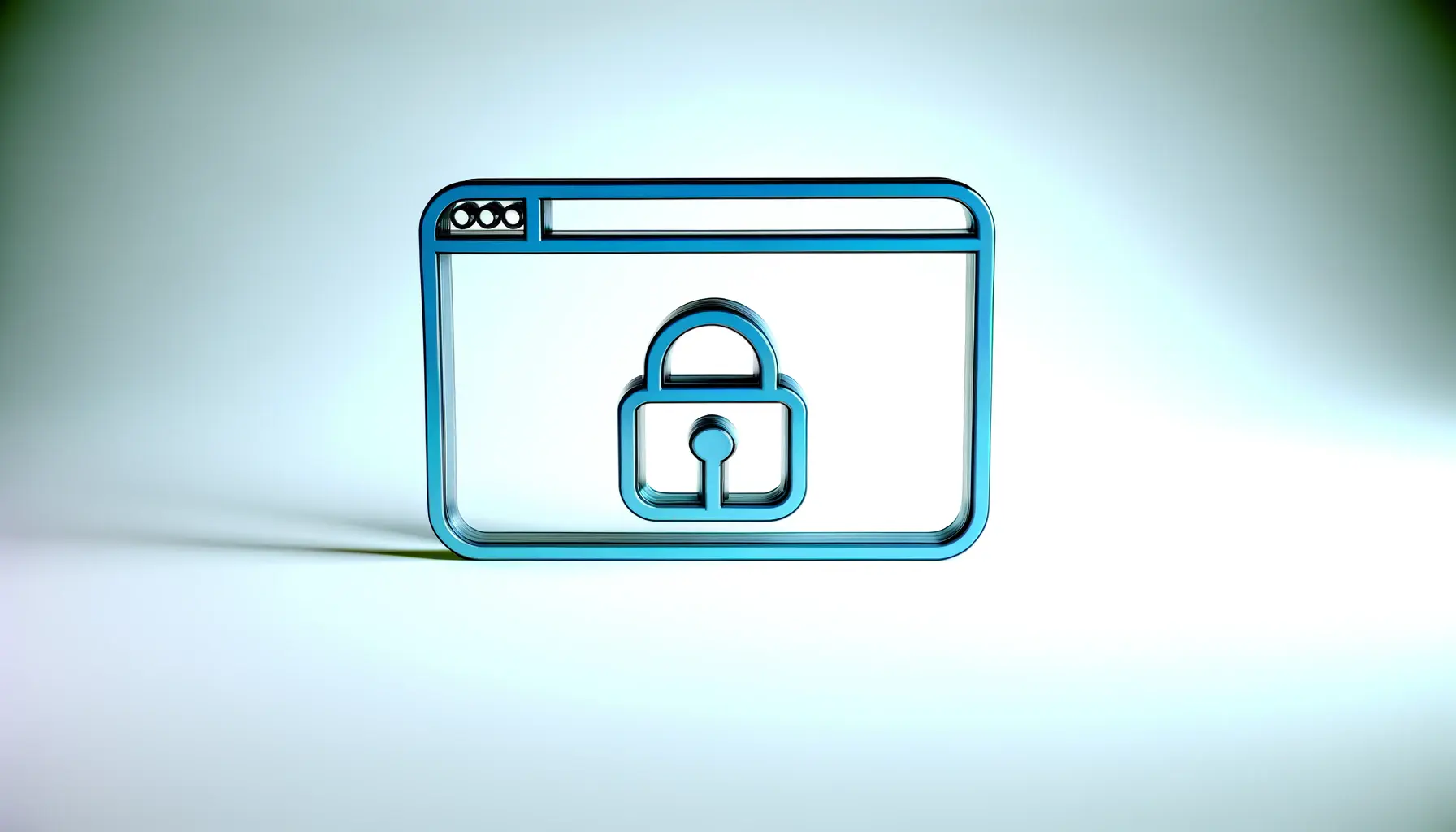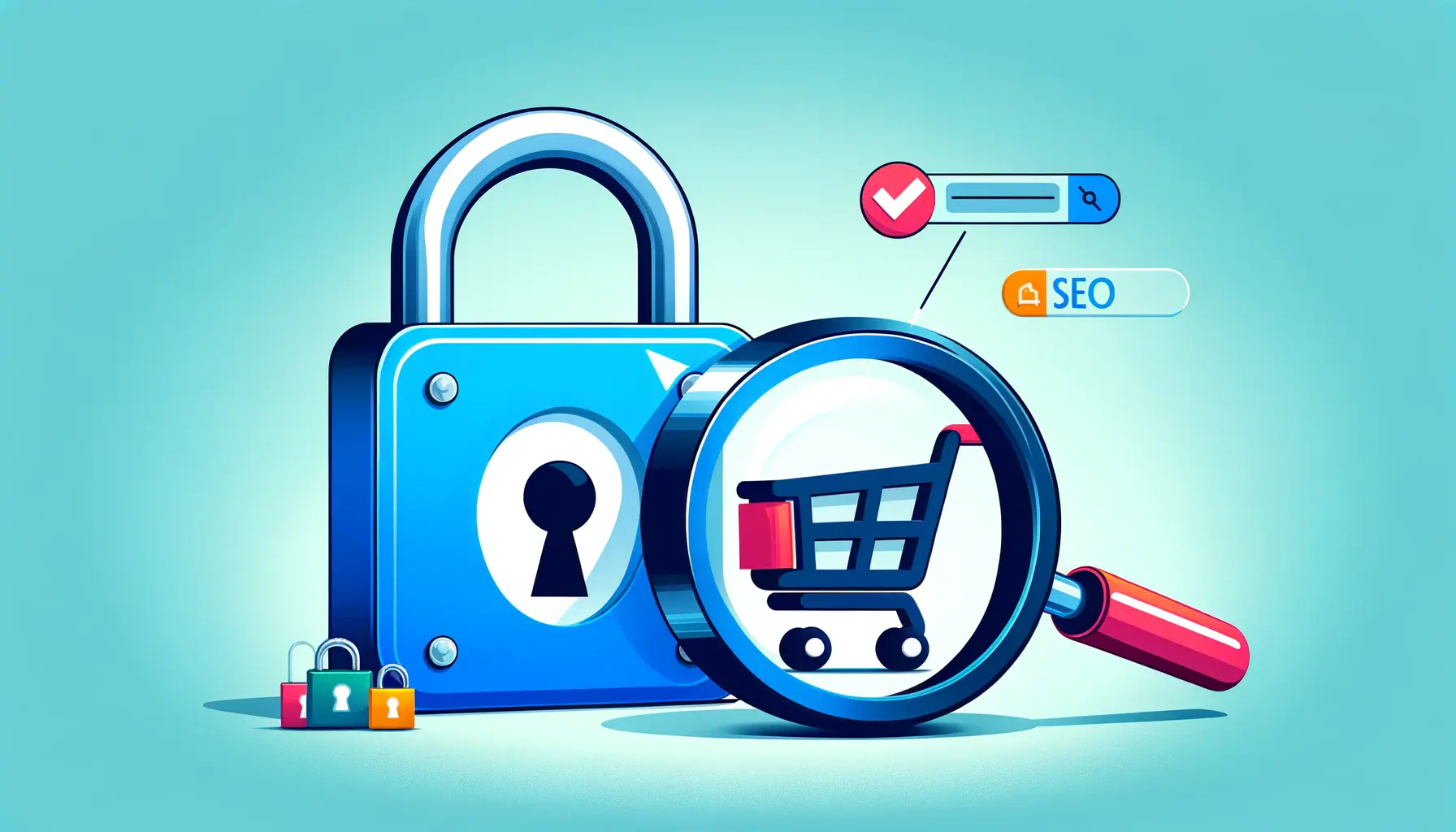In the rapidly evolving landscape of artificial intelligence, ChatGPT 4 emerges as a beacon of innovation, pushing the boundaries of conversational AI.
This iteration of OpenAI’s groundbreaking technology not only enhances user experience through more nuanced and context-aware interactions but also raises critical questions about security in the digital age.
As we delve deeper into the capabilities of ChatGPT 4, it becomes imperative to address the security measures and protocols that safeguard these interactions from potential threats and vulnerabilities.
The significance of security within ChatGPT 4 cannot be overstated.
As the technology finds its way into various sectors—ranging from customer service and education to healthcare and beyond—the need for robust security measures becomes paramount.
This necessity stems from the dual role of ChatGPT 4: as a tool for enhancing efficiency and as a potential target for cyber threats.
The balance between leveraging the full potential of ChatGPT 4 and ensuring the privacy and safety of its users is a delicate one, requiring a comprehensive understanding of the security landscape surrounding conversational AI.
- ChatGPT 4 Security
- Challenges in ChatGPT 4 Security
- Implementing Security Best Practices
- Data Privacy and Compliance in ChatGPT 4
- Enhancing ChatGPT 4 with AI and Machine Learning Security
- User-Centric Security: Empowering ChatGPT 4 Users
- Future Directions in ChatGPT 4 Security
- Securing the Future of Conversational AI with ChatGPT 4
- ChatGPT 4 Security FAQs
ChatGPT 4 Security
At its core, ChatGPT 4 security encompasses a wide array of measures designed to protect the integrity of the system and the confidentiality of user data.
These measures are not just technical safeguards but also encompass policies and protocols aimed at mitigating risks associated with the use of conversational AI.
From encryption standards to data handling practices, the security framework of ChatGPT 4 is multifaceted, addressing various potential vulnerabilities.
One of the foundational aspects of ChatGPT 4 security is the emphasis on data encryption.
By ensuring that all user interactions are encrypted, ChatGPT 4 aims to safeguard sensitive information from unauthorized access.
This approach is complemented by stringent access controls, which regulate who can interact with the system and under what circumstances.
Together, these measures form the first line of defense against cyber threats, protecting user data from potential breaches.
Key Security Features of ChatGPT 4
The security features of ChatGPT 4 are designed with the dual goals of maximizing user safety and minimizing the risk of data breaches.
Among these features, encryption stands out as a critical component.
By encrypting data both at rest and in transit, ChatGPT 4 ensures that user information remains confidential and secure.
This encryption is supported by advanced algorithms and protocols, which are regularly updated to counteract emerging cyber threats.
Another cornerstone of ChatGPT 4 security is the implementation of robust access controls.
These controls are tailored to prevent unauthorized access to the system, ensuring that only verified users can interact with ChatGPT 4.
Access controls are often complemented by multi-factor authentication (MFA), adding an extra layer of security by requiring users to provide multiple forms of verification before gaining access.
This multi-pronged approach to security is indicative of the comprehensive measures taken to protect ChatGPT 4 and its users.
The security of ChatGPT 4 is a multifaceted endeavor, encompassing encryption, access controls, and continuous monitoring to safeguard user interactions.
Challenges in ChatGPT 4 Security
The deployment of ChatGPT 4 in various domains introduces unique security challenges that necessitate vigilant and adaptive security measures.
As the technology becomes increasingly integrated into critical sectors, the potential for exploitation by malicious actors grows.
These challenges highlight the importance of a dynamic security strategy that evolves in response to new threats.
One of the primary security challenges is the sophistication of cyber threats.
As attackers become more adept at exploiting vulnerabilities, ChatGPT 4 must continuously update its security protocols to stay ahead.
This cat-and-mouse game requires constant vigilance and innovation from security teams to protect against data breaches, unauthorized access, and other cyber threats.
Common Security Vulnerabilities
- Data Breaches: Unauthorized access to sensitive user data, leading to potential identity theft and privacy violations.
- Phishing Attacks: Exploiting ChatGPT 4 to generate convincing phishing content, tricking users into divulging personal information.
- Malware Distribution: Utilizing ChatGPT 4’s capabilities to craft and spread malicious software.
Strategies for Mitigating Risks
To address these challenges, implementing robust security strategies is crucial.
These strategies should be multifaceted, addressing both the technological and human elements of security.
- Regular Security Audits: Conducting comprehensive audits to identify and rectify vulnerabilities within the system.
- Advanced Threat Detection: Utilizing AI and machine learning to detect and respond to security threats in real-time.
- User Education: Empowering users with the knowledge to recognize and avoid potential security threats.
By adopting these strategies, ChatGPT 4 can enhance its security posture and mitigate the risks associated with cyber threats.
It is a continuous process that requires ongoing attention and adaptation to the evolving landscape of cyber security.
Effective security measures for ChatGPT 4 involve a combination of technological safeguards, regular audits, and user education to address the dynamic nature of cyber threats.
Implementing Security Best Practices
To fortify ChatGPT 4 against the myriad of security threats, it’s imperative to implement a set of best practices that span across technical and operational domains.
These practices are not static; they evolve in response to new insights into potential vulnerabilities and advancements in cybersecurity methodologies.
The goal is to create a resilient framework that not only defends against current threats but is also adaptable to future challenges.
At the heart of these best practices is the principle of ‘security by design’.
This approach integrates security considerations into the development and deployment processes of ChatGPT 4, ensuring that security is not an afterthought but a foundational component of the technology.
By embedding security into the lifecycle of ChatGPT 4, potential vulnerabilities can be identified and mitigated early on, reducing the risk of exploitation.
Core Security Best Practices
- Encryption: Employing state-of-the-art encryption for data at rest and in transit to ensure confidentiality and integrity.
- Access Control: Implementing strict access control measures, including role-based access, to limit exposure to sensitive information.
- Regular Patching: Keeping software up-to-date with the latest security patches to protect against known vulnerabilities.
- Incident Response Planning: Preparing for potential security incidents with a comprehensive incident response plan that outlines procedures for containment, eradication, and recovery.
Enhancing User Security Awareness
Beyond technical measures, enhancing user security awareness plays a crucial role in safeguarding ChatGPT 4.
Users are often the first line of defense against phishing attacks and other forms of social engineering.
Providing users with the tools and knowledge to recognize suspicious activities can significantly reduce the risk of security breaches.
This involves regular training sessions, security awareness campaigns, and accessible resources that empower users to contribute to the overall security posture of ChatGPT 4.
Implementing these best practices requires a concerted effort from all stakeholders involved with ChatGPT 4.
From developers and security professionals to end-users, everyone has a role to play in creating a secure environment for conversational AI.
By fostering a culture of security awareness and adopting a proactive approach to cybersecurity, ChatGPT 4 can continue to innovate while maintaining the trust and safety of its users.
Adopting a holistic approach to security, encompassing both technical measures and user education, is essential for protecting ChatGPT 4 against evolving cyber threats.
Data Privacy and Compliance in ChatGPT 4
In the digital era, data privacy and compliance have become paramount, especially for technologies like ChatGPT 4 that process vast amounts of personal information.
Navigating the complex landscape of global data protection regulations is a critical aspect of maintaining user trust and ensuring the ethical use of AI.
ChatGPT 4’s approach to data privacy and compliance reflects a commitment to safeguarding user data while adhering to legal and ethical standards.
At the core of ChatGPT 4’s data privacy strategy is the principle of minimal data collection.
This approach ensures that only the data necessary for improving and delivering services are collected, thereby reducing the risk of privacy breaches.
Furthermore, ChatGPT 4 employs rigorous data handling and storage practices, including anonymization and encryption, to protect user data from unauthorized access and ensure its confidentiality.
Adhering to Global Data Protection Regulations
- GDPR Compliance: ChatGPT 4 aligns with the General Data Protection Regulation, offering users in the European Union rights such as data access, rectification, and erasure.
- CCPA Alignment: For users in California, ChatGPT 4 adheres to the California Consumer Privacy Act, providing transparency around data collection and the right to opt-out of data sale.
- Global Data Protection Efforts: Beyond GDPR and CCPA, ChatGPT 4 strives to comply with other global data protection laws, ensuring a broad spectrum of user rights and protections.
Building Trust Through Transparency
Transparency is a cornerstone of ChatGPT 4’s approach to data privacy and compliance.
By clearly communicating its data collection, processing, and storage practices, ChatGPT 4 empowers users with the knowledge to make informed decisions about their interactions with the AI.
This transparency extends to providing users with easy-to-use tools for managing their data, including options for data deletion and portability, further enhancing user trust and control over personal information.
Moreover, ChatGPT 4’s commitment to ethical AI development is reflected in its adherence to privacy-by-design principles.
This proactive stance on privacy ensures that data protection measures are integrated at every stage of the AI’s lifecycle, from initial design to deployment and beyond.
By prioritizing user privacy and compliance with global data protection regulations, ChatGPT 4 sets a standard for responsible AI development and deployment.
ChatGPT 4’s dedication to data privacy and compliance underscores its commitment to ethical AI use, fostering trust and ensuring a secure environment for users.
Enhancing ChatGPT 4 with AI and Machine Learning Security
The integration of artificial intelligence (AI) and machine learning (ML) technologies into ChatGPT 4’s security framework represents a significant leap forward in protecting against sophisticated cyber threats.
By harnessing the power of AI and ML, ChatGPT 4 can proactively identify and neutralize potential security risks before they impact users.
This proactive security stance is crucial in an era where cyber threats are becoming increasingly complex and adaptive.
AI and ML algorithms within ChatGPT 4 are trained on vast datasets of security threat patterns, enabling the system to recognize and respond to anomalies in real-time.
This capability allows for the early detection of unusual behavior that could indicate a security breach, such as attempts to exploit vulnerabilities or conduct denial-of-service attacks.
By identifying these threats early, ChatGPT 4 can initiate appropriate countermeasures to mitigate risk and protect user data.
Real-time Threat Detection and Response
- Anomaly Detection: AI-driven anomaly detection systems analyze user interactions with ChatGPT 4 to identify patterns that deviate from the norm, signaling potential security threats.
- Automated Response Mechanisms: Upon detecting a threat, ChatGPT 4 can automatically implement response strategies, such as blocking malicious requests or isolating affected components, to prevent further damage.
- Continuous Learning: ChatGPT 4’s AI and ML systems continuously learn from new security threats, enhancing their ability to protect against future attacks.
Adaptive Security Measures
The dynamic nature of cyber threats requires a security approach that can adapt and evolve.
ChatGPT 4’s use of AI and ML enables the system to adjust its security measures based on emerging threat landscapes.
This adaptability ensures that ChatGPT 4 remains resilient against new and unforeseen vulnerabilities, safeguarding user interactions against the latest cyber threats.
Furthermore, the integration of AI and ML into ChatGPT 4’s security framework supports the development of more sophisticated encryption techniques and secure communication protocols.
These advancements in security technology not only enhance the protection of user data but also ensure the integrity of ChatGPT 4’s interactions, maintaining the confidentiality and reliability of the AI system.
Leveraging AI and ML for security enables ChatGPT 4 to offer real-time threat detection and adaptive measures, ensuring robust protection against cyber threats.
User-Centric Security: Empowering ChatGPT 4 Users
In the realm of ChatGPT 4’s security, a user-centric approach plays a pivotal role in fortifying the system against potential threats.
By empowering users with the tools and knowledge to navigate the platform safely, ChatGPT 4 enhances its overall security posture.
This empowerment is achieved through a combination of user education, transparent communication, and providing users with control over their data and interactions.
User education is a cornerstone of this strategy.
By informing users about common cyber threats and how to avoid them, ChatGPT 4 creates a more secure environment for all its users.
This education covers topics such as recognizing phishing attempts, understanding the importance of secure passwords, and the risks associated with sharing sensitive information.
Through regular updates and resources, users are kept informed about the best practices for interacting with AI technologies safely.
Tools for User Control and Privacy
- Data Management Options: ChatGPT 4 provides users with intuitive tools to manage their data, including options to review, modify, or delete their information, thereby enhancing user control over personal data.
- Privacy Settings: Users can adjust their privacy settings to control the amount of information they share with ChatGPT 4, tailoring their experience to their comfort level with data sharing.
- Consent Mechanisms: ChatGPT 4 employs clear consent mechanisms, ensuring that users are fully informed about how their data will be used and have the option to opt-in or opt-out of data collection practices.
Building a Security-Minded Community
ChatGPT 4’s user-centric security approach extends beyond individual tools and settings to foster a community that values and practices secure interactions.
By encouraging users to share their knowledge and experiences, ChatGPT 4 leverages the collective wisdom of its user base to identify potential threats and share best practices.
This community-driven approach to security not only enhances the individual user’s safety but also contributes to the resilience of ChatGPT 4 as a whole.
Ultimately, by placing users at the center of its security strategy, ChatGPT 4 not only protects against external threats but also minimizes the risk of security breaches from within.
This proactive and inclusive approach to security ensures that ChatGPT 4 remains a safe and trusted platform for users to engage with AI technology.
Empowering users with education, control, and community support is essential for maintaining a secure and trustworthy ChatGPT 4 environment.
Future Directions in ChatGPT 4 Security
The landscape of cybersecurity is ever-evolving, with new challenges and threats emerging as technology advances.
ChatGPT 4, at the forefront of conversational AI, must continuously adapt its security measures to protect against these evolving threats.
Looking towards the future, several key areas are poised to shape the next generation of ChatGPT 4 security strategies, ensuring the platform remains a safe and secure environment for users to interact with AI.
One of the most promising areas for future development in ChatGPT 4 security is the integration of blockchain technology.
Blockchain’s decentralized nature and cryptographic security offer a new paradigm for securing AI interactions.
By leveraging blockchain, ChatGPT 4 could enhance data integrity and user privacy, creating a transparent and tamper-proof record of interactions that protects against data manipulation and breaches.
Advancements in AI-Driven Security
- Self-Learning Security Systems: Future iterations of ChatGPT 4 could incorporate self-learning security systems that autonomously evolve to counter new cyber threats, reducing reliance on manual updates and patches.
- Behavioral Biometrics: Utilizing AI to analyze user behavior patterns could add an additional layer of security, identifying potential unauthorized access based on deviations from established user behavior profiles.
Enhancing User Participation in Security
As ChatGPT 4 continues to evolve, enhancing user participation in the platform’s security will become increasingly important.
Future security frameworks may include more sophisticated user feedback mechanisms, allowing users to report potential security issues directly within the platform.
This direct line of communication between users and security teams will enable quicker responses to emerging threats and foster a collaborative approach to cybersecurity.
Moreover, the development of community-driven security initiatives, where users can contribute to the security of the platform through crowdsourced threat intelligence and vulnerability reporting, could further enhance ChatGPT 4’s defensive capabilities.
By harnessing the collective expertise and vigilance of its user base, ChatGPT 4 can create a more resilient and secure platform for all.
In conclusion, the future of ChatGPT 4 security lies in the continuous innovation and adaptation of its security measures.
By embracing new technologies, fostering user engagement, and leveraging the power of AI, ChatGPT 4 can stay ahead of cyber threats, ensuring a secure and trustworthy platform for users to explore the possibilities of conversational AI.
Securing the Future of Conversational AI with ChatGPT 4
The journey through the security landscape of ChatGPT 4 reveals a complex, multifaceted domain where innovation and vigilance converge to protect users and their data.
As we’ve explored, the security of ChatGPT 4 is not a static feature but a dynamic, evolving process that adapts to new challenges and threats.
From implementing foundational security measures to anticipating future directions in cybersecurity, ChatGPT 4 demonstrates a commitment to maintaining a secure and trustworthy platform for conversational AI.
Key Takeaways in ChatGPT 4 Security
Reflecting on the insights gathered, several key takeaways emerge that underscore the importance of security in the era of advanced conversational AI:
- Robust security frameworks are essential for protecting user data and ensuring the integrity of AI interactions.
- User-centric security measures, including education and empowerment, play a crucial role in safeguarding the platform.
- The integration of AI and machine learning into security strategies offers proactive defenses against evolving cyber threats.
- Future advancements in technology, such as blockchain and behavioral biometrics, hold promise for enhancing ChatGPT 4’s security.
- Active user participation and community-driven security initiatives can further strengthen the platform’s defenses.
Forging Ahead with Confidence
As ChatGPT 4 continues to navigate the challenges of cybersecurity, its journey reflects a broader narrative in the field of conversational AI.
The platform’s proactive approach to security, combined with its commitment to user privacy and compliance, sets a benchmark for others in the industry.
Looking ahead, the continuous innovation and adaptation of ChatGPT 4’s security measures will be critical in shaping a future where conversational AI can thrive, free from the constraints of cyber threats and vulnerabilities.
In conclusion, the security of ChatGPT 4 is a testament to the power of technology to not only create new possibilities but also to protect those possibilities.
By staying vigilant, embracing innovation, and fostering a culture of security awareness, ChatGPT 4 is well-positioned to lead the way in secure, conversational AI.
For users and developers alike, this represents an exciting frontier, one where the potential of AI can be explored with confidence and peace of mind.
ChatGPT 4 Security FAQs
Explore common inquiries surrounding the security aspects of ChatGPT 4, providing insights into safeguarding interactions in the realm of conversational AI.
ChatGPT 4 employs advanced encryption, robust access controls, and AI-driven threat detection to ensure user data protection and system integrity.
Yes, through AI and ML algorithms, ChatGPT 4 can identify and mitigate phishing attempts by analyzing patterns and anomalies in data.
No, ChatGPT 4 prioritizes user privacy and does not sell personal information to third parties, aligning with ethical AI practices.
ChatGPT 4 has an incident response plan for data breaches, including immediate containment, eradication of threats, and communication with affected users.
Yes, ChatGPT 4 is designed to comply with GDPR, offering users in the EU rights over their data, including access, rectification, and deletion.
ChatGPT 4 utilizes AI to detect potential malware in interactions, preventing malicious software from compromising user data and system security.
Yes, ChatGPT 4 offers customizable privacy settings, allowing users to control the sharing and processing of their data for enhanced privacy.
ChatGPT 4 continuously updates its security protocols based on emerging cyber threats and advancements in cybersecurity technologies.












